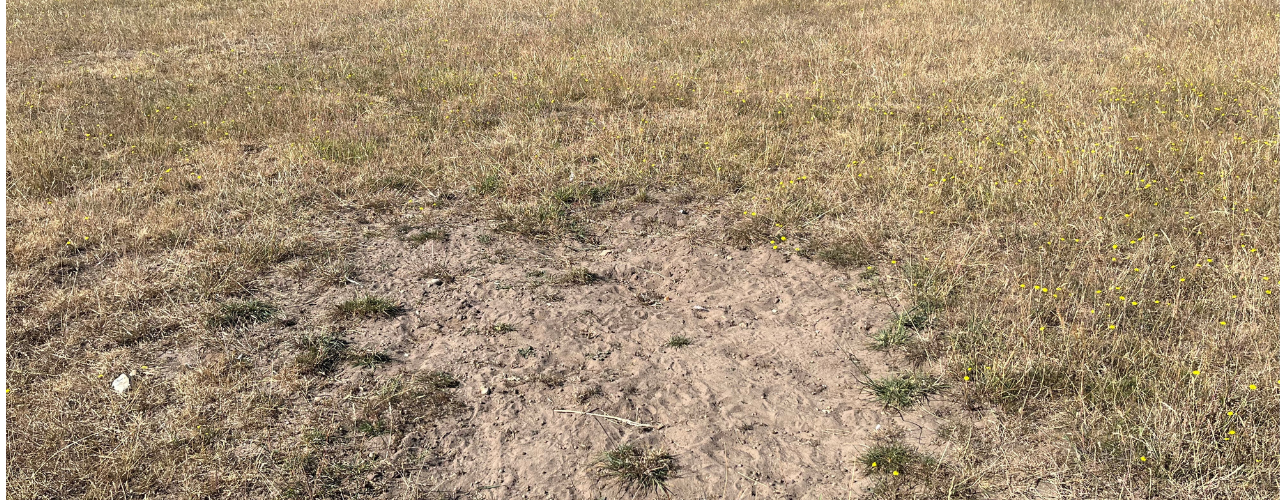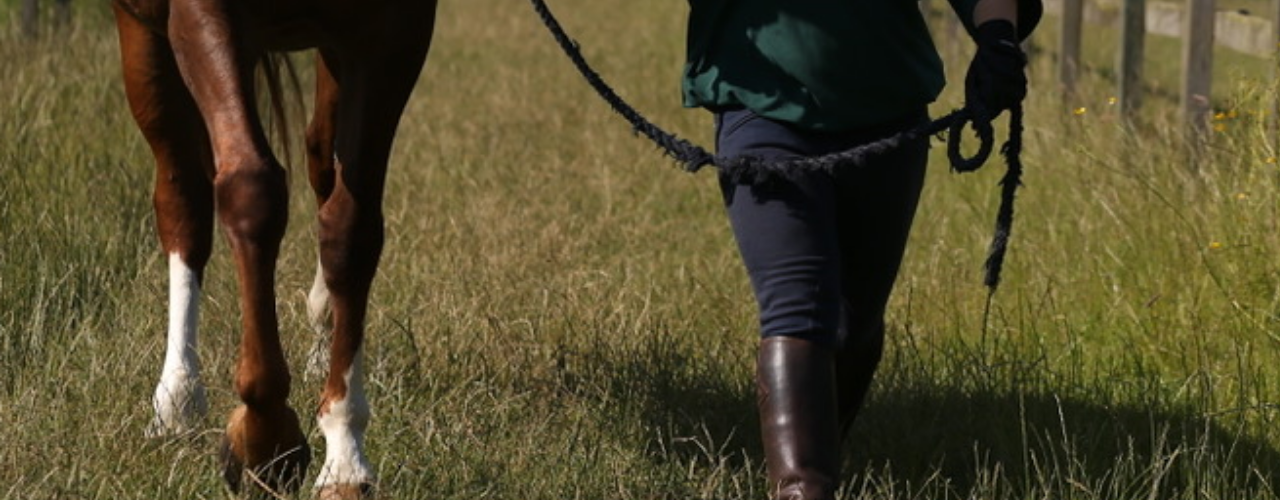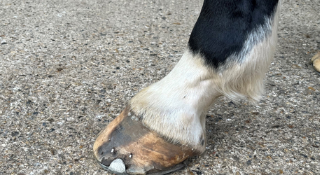
Be sand colic savvy
Keeping your horses on light sandy soil can mean less mud in the winter and easier paddock maintenance come the spring but with it...
13 July 2022
Read More
What to do if your horse is severely lame
It can be distressing to see a severely lame horse and there are several reasons why your equine friend may not be placing weight on one or more of their feet. Seeking immediate veterinary advice is always the best course of action, but there are a few things to look out for and some first aid do’s and don’t’s.
The first question to ask yourself is can he walk or is he truly non weight bearing? If your horse is comfortable with being examined and it is safe to do so you should examine the entire leg for wounds, areas of heat, pain or swelling. It’s also important to look in the foot for stones or penetrating objects. This may help you and your vet to pinpoint the cause.
Common causes of severe lameness
Foot abscesses
A hoof abscess is a localised accumulation of pus or fluid within the horse’s hoof. It is one of the most common causes of sudden, severe lameness. The horse may rest the affected foot constantly and be reluctant to move, although some will have more subtle signs. The foot or coronary band may be hot and the lower leg swollen (especially around the pastern and inside of the cannon bone). The digital pulses will be increased and may be quite easy to detect. Often cracks or tracts are apparent in the sole, especially at the toe, but a vet or farrier is best placed to pare these out.
You can find out how to deal with a hoof abscess here https://www.horsedialog.co.uk/Health/Hoofcare/Hoof-Abscesses.aspx
Foot penetrations
If a sharp object, such as a nail, pierces the foot and damages the structures within, it can result in an extremely serious infection. Penetrations towards the central foot are potentially life threatening but those around the edge of the sole or heel are usually less serious; however, all such wounds should be thoroughly assessed by a vet.
Unless leaving the object in will cause further damage, or there will be a delay in treatment, it can be an advantage not to remove it so that your vet can accurately assess which structures may be affected. Padding around the object can help to prevent further damage while waiting for the vet.
Cellulitis/Lymphangitis
This is an acute inflammation of the limb and if severe, the lymphatic drainage vessels. The affected limb is usually very swollen and painful to touch, and the horse is reluctant to move. Although the initial cause is most likely to be a wound this may be too small to be found. Veterinary advice should be sought immediately to initiate appropriate treatment and rule out other causes or issues.
Joint infections
Joints and some tendons are surrounded by a sac of fluid (synovial fluid) which allows the joint/tendon to move smoothly. If punctured externally, this fluid can become infected (synovial sepsis), a situation which is extremely serious. A wound is usually present, but this can be as small as a thorn which can be easily missed. Lameness most usually develops rapidly over 12 to 24 hours such that the horse will be unable to put any weight on the limb.
There may be signs of distress such as sweating and an increased respiratory rate. Other signs may include heat, pain and swelling around a joint or tendon.
Synovial sepsis is an emergency and immediate veterinary advice should be sought in all suspected cases, as immediate surgical flushing and treatment are usually the only solution.
Fractures
In most cases the horse is severely lame, unable to bear any weight on the affected limb and with obvious signs of distress such as sweating, shaking and increased or laboured breathing. There may be obvious injury and swelling to the limb; however, the location of some fractures may not be immediately apparent. Some injuries, particularly kicks from other horses, can result in damage to the bone without severe lameness at the time of injury, for example a hairline fracture. These should be assessed by your vet, as the bone can catastrophically fracture later if not managed correctly.
If a fracture is suspected seek immediate veterinary attention. Try to keep the horse calm and still (food and quiet equine company can be useful). Do not ask the horse to move if at all possible until it has been examined by the vet. If the horse is panicking try to leave it in a safe place where nobody can be hurt.
Tying-up/Azoturia
This is a severe form of muscle cramping which most often happens during or after exercise, especially after a few days of rest. It can vary greatly in its severity and may be serious in some cases.
Do not move the horse except on to a trailer/to a nearby stable. Ensure the horse is comfortable: provide a deep bed; offer water at head height; avoid draughts and keep the horse warm using rugs as necessary. Consult your vet as the horse will usually need some form of pain relief and careful management over the next few days and as they come back into work
Tendon or ligament Injuries
Injuries to the tendons and ligaments commonly occur in the lower limbs - for example, the superficial and deep digital flexor tendons and the suspensory and check ligaments. They can be due to direct trauma, or from stresses and strains put on the structures during work, in which case there is no associated wound or trauma. Early signs of injury may be very subtle with only an increased sensitivity on palpation or mild swelling and heat in the area. In more severe cases there may be obvious swelling and bowing (a curved appearance when viewed from the side) of the tendon or ligament and an acute onset of moderate to severe lameness.
If you notice any abnormality, notably swelling and pain on palpation around this area you should consult your vet before turning the horse out or continuing with work.
Traumatic injuries involving the tendons or ligaments will always need urgent veterinary attention. Application of a stable bandage over 2-3 layers of gamgee can help to support the limb until the vet arrives Do not move the horse other than to a nearby stable or safe area.
Laminitis
Laminitis is inflammation of the soft tissues (laminae) that join the pedal bone to the hoof capsule. It can occur due to hormonal problems; diet; trauma or may be secondary to other illnesses. In cases of mild to moderate laminitis the horse may shift weight, alternately and frequently resting each leg in an attempt to be comfortable. There may be some reluctance to move, and the feet may feel hot to touch and the digital pulses increased.
You can learn more about laminitis here https://www.horsedialog.co.uk/Health/Laminitis/How-to-spot-the-signs-of-equine-laminitis-in-your-horse.aspx
No matter the cause, severe lameness is an indication that your horse is in pain which is why it’s so important to contact your vet as soon as possible.

Keeping your horses on light sandy soil can mean less mud in the winter and easier paddock maintenance come the spring but with it...
13 July 2022
Read More
The fetlock is a hard-working, high motion hinge joint. It is the meeting point of the cannon bone, proximal sesamoid bones and th...
20 June 2022
Read More